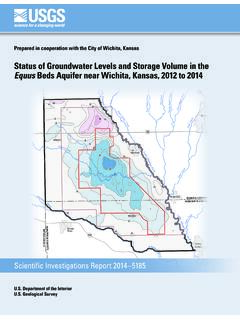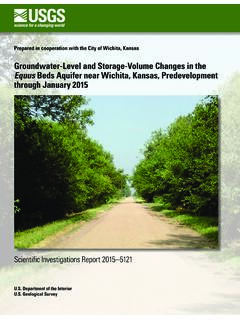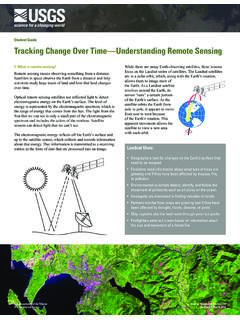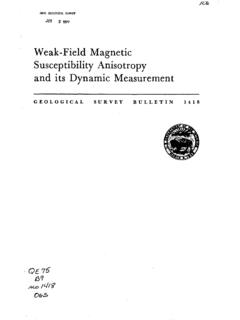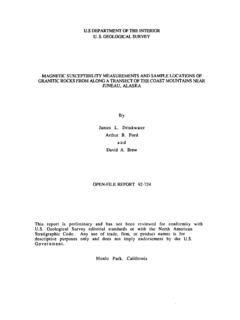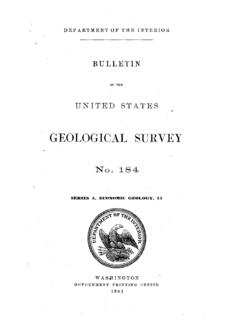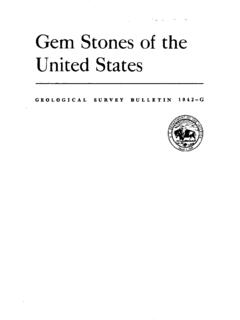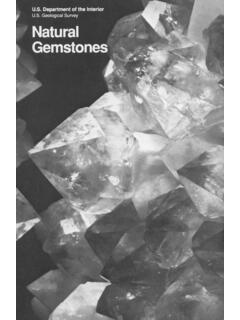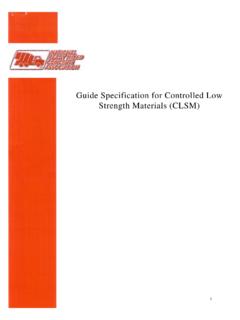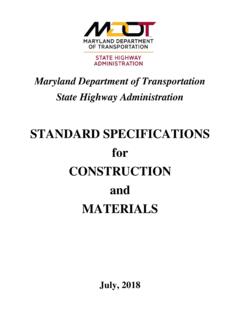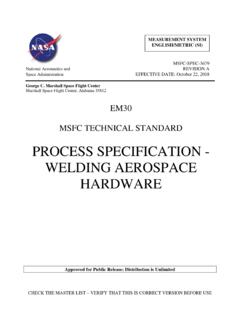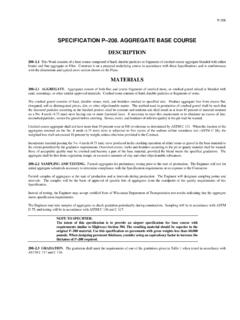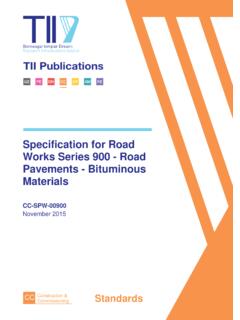Transcription of Lidar Base Specification - USGS
1 National Geospatial Program Lidar base Specification Chapter 4 of Section B, Geological Survey Standards Book 11, Collection and Delineation of Spatial Data Techniques and Methods 11 B4. Version , August 2012. Version , October 2014. Version , November 2014. Version , February 2018. Department of the Interior Geological Survey Cover. Background: Image depicts a hillshade first-return light detection and ranging ( Lidar ) surface of a suburban area of Sioux Falls, South Dakota. Front cover inset: Image depicts a perspective view of an all-return Lidar point cloud. Back cover inset: Image depicts a hillshade perspective view of a hydro-flattened bare-earth Lidar surface of Palisades State Park in Garretson, South Dakota.
2 Lidar base Specification By Hans Karl Heidemann Chapter 4 of Section B, Geological Survey Standards Book 11, Collection and Delineation of Spatial Data National Geospatial Program Techniques and Methods 11 B4. Version , August 2012. Version , October 2014. Version , November 2014. Version , February 2018. Department of the Interior Geological Survey Department of the Interior RYAN K. ZINKE, Secretary Geological Survey William H. Werkheiser, Deputy Director exercising the authority of the Director Geological Survey, Reston, Virginia: 2018. First release: 2012. Revised: October 2014 (ver.)
3 November 2014 (ver. ). February 2018 (ver. ). For more information on the USGS the Federal source for science about the Earth, its natural and living resources, natural hazards, and the environment visit or call 1 888 ASK USGS. For an overview of USGS information products, including maps, imagery, and publications, visit Any use of trade, firm, or product names is for descriptive purposes only and does not imply endorsement by the Government. Although this information product, for the most part, is in the public domain, it also may contain copyrighted materials as noted in the text.
4 Permission to reproduce copyrighted items must be secured from the copyright owner. Suggested citation: Heidemann, Hans Karl, 2018, Lidar base Specification (ver. , February 2018): Geological Survey Techniques and Methods, book 11, chap. B4, 101 p., ISSN 2328-7055 (online). iii Contents Purpose and Maintenance Requirement Revision Version Version Version (this document)..4. Collection Quality Multiple Discrete Intensity Nominal Pulse Data Spatial Distribution and Collection Data Processing and American Society for Photogrammetry and Remote Sensing LAS File Full Time of Global Positioning System Coordinate Reference Well-Known Units of File and Point Source Positional Accuracy Absolute Horizontal Relative Vertical Intraswath Interswath (Overlap) Check Absolute Vertical Use of the LAS Withheld Bit Use of the LAS Overage (Overlap) Bit Point Classification Point iv Classified Point Bare-Earth Surface (Raster Digital Elevation Model)
5 14. Digital Elevation Model Surface EleHydro Breakline GIS Data Attribute Table Optional Additional References Appendix 1. Common Data Appendix 2. Hydro-Flattening References Appendix 3. Light Detection and Ranging Metadata Appendix 4. Light Detection and Ranging Metadata Appendix 5. Well-Known Text Coordinate Reference System Appendix 6. Supplemental Tables 1. Aggregate nominal pulse spacing and 2. Relative vertical accuracy for light detection and ranging swath 3. Land cover 4. Absolute vertical accuracy for light detection and ranging data and digital elevation 5.
6 Minimum light detection and ranging data classification 6. Minimum digital elevation model cell 7. Attribute table structure for EleHydro breakline 8. Domain values and descriptions for feature 9. Codes for EleHydro breakline point 10. Codes for EleHydro breakline line 11. Codes for EleHydro breakline polygon Figures 1. Image showing single coverage collection, no 2. Image showing designed double coverage collection, 50-percent 3. Image showing designed double coverage collection, cross-flights with 20-percent 4. Image showing graphic depiction of swath 5. Image showing graphic depiction of swath 6.
7 Image showing sample EleHydro breakline area, Cabell County, West v 7. Image showing sample area overlaid with light detection and ranging 8. Image showing sample area overlaid with light detection and ranging-based breaklines and 9. Image showing pure light detection and ranging digital elevation 10. Image showing hydro-flattened light detection and ranging digital elevation 11. Image showing hydro-enforced light detection and ranging digital elevation 12. Image showing colorized version of the hydro-enforced digital elevation 13. Screen capture showing sample breakline attribute table with codes 14.
8 Screen capture showing sample breakline attribute table with labels 15. Screen capture showing sample breakpoly attribute table with codes 16. Screen capture showing sample breakpoly attribute table with labels 17. Image showing National Hydrography Dataset and light detection and ranging-based 18. Image showing example of 19. Screen capture showing example of a large channelized river, with a cross-section 20. Image showing example of a braided stream Conversion Factors International System of Units to customary units Multiply By To obtain Length centimeter (cm) inch (in.)
9 Meter (m) foot (ft). meter (m) yard (yd). Area hectare acre square meter (m ) 2. acre square kilometer (km2) acre square meter (m ) 2. square foot (ft2). square kilometer (km2) square mile (mi2). Datum Elevation, as used in this Specification , refers to distance above the geoid, unless specifically referenced to the ellipsoid. Height, as used in this Specification , refers to distance above the ground elevation. vi Abbreviations 2D 2-dimensional (feature vertices are defined in x and y with no elevation information). (feature vertices are defined in x and y with a single elevation attribute for the entire feature).
10 3D 3-dimensional (feature vertices are defined in x, y, and z). 3 DEP 3D Elevation Program ACCr accuracy in the radial direction that includes both x and y ACCz accuracy in the z direction ANPD aggregate nominal pulse density ANPS aggregate nominal pulse spacing ARRA American Recovery and Reinvestment Act ASPRS American Society for Photogrammetry and Remote Sensing BPA buffered project area cm centimeter CONUS conterminous United States CR carriage return CRS coordinate reference system CSDGM Content Standard for Digital Geospatial Metadata CVA consolidated vertical accuracy DEM digital elevation model DPA defined project
